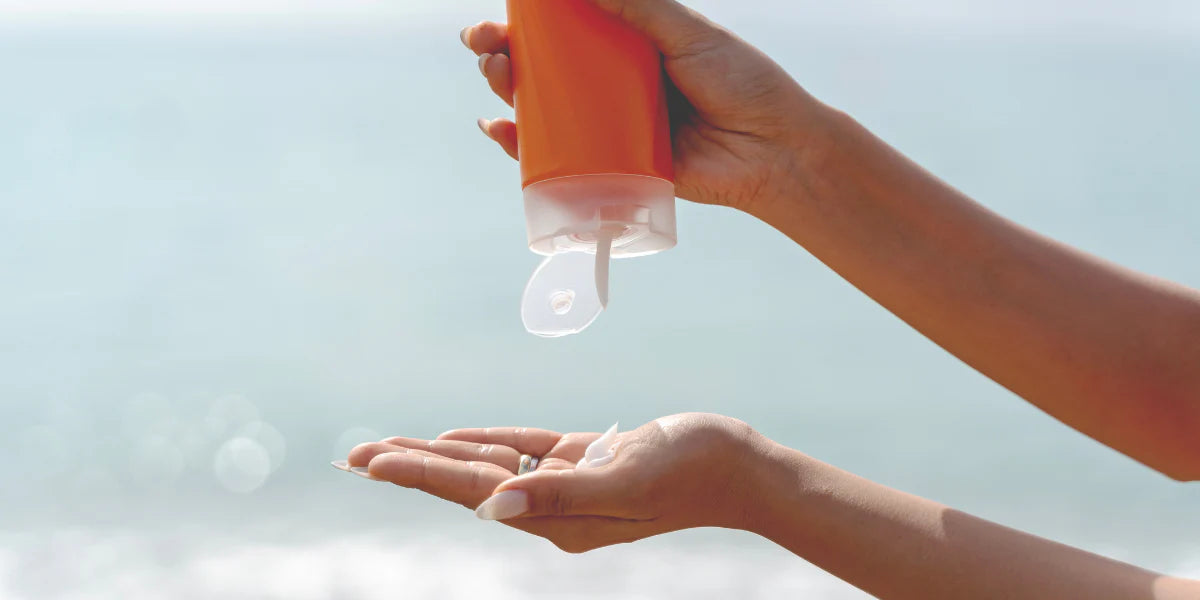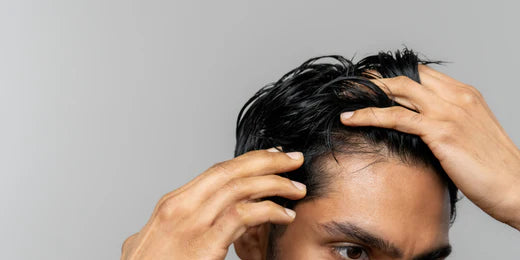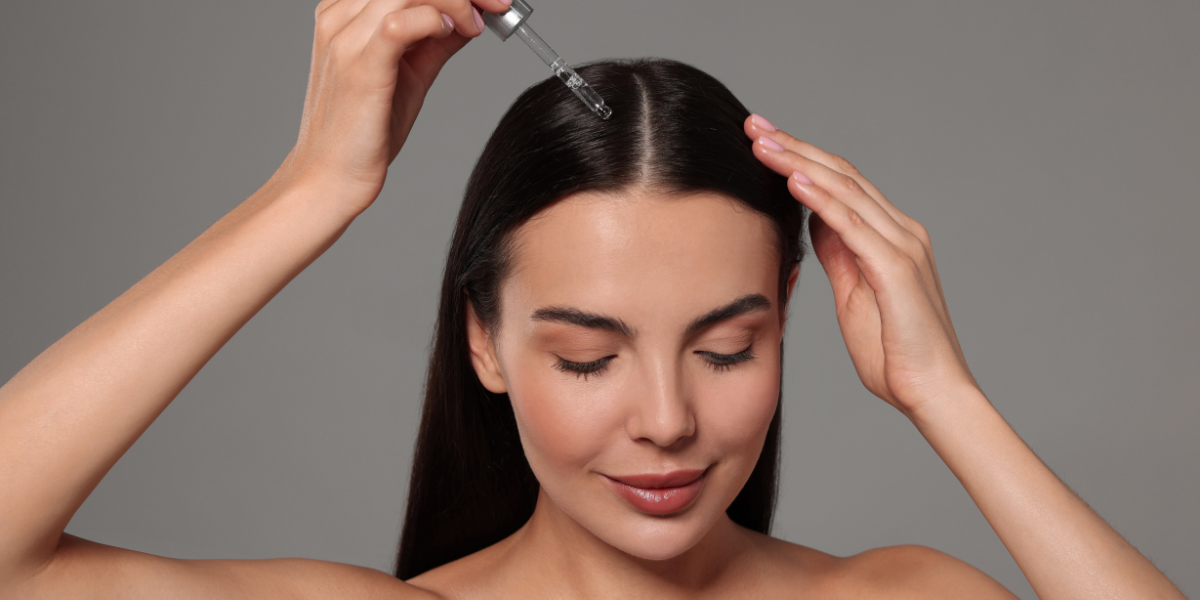By now, most of us are pretty good at remembering to apply sunscreen, particularly when we know that we’ll be outside during certain times of day and for extended periods of time. But how often do you think about protecting your scalp in the sun? And have you ever wondered whether your hair itself needs sun protection?
Sun damage to your hair strands is a real possibility and it can have detrimental effects to the overall health of your hair. Knowing how to properly protect your scalp and hair this summer could not only minimize your risk of skin cancers, but also help you to maintain soft and healthy hair. Let’s examine what exactly UV rays can do to your scalp and hair and explain the precautions you should be taking whilst in the sun. Dr. Christina Han, a board-certified dermatologist, also weighs in and gives her expert advice on protecting your hair and scalp.
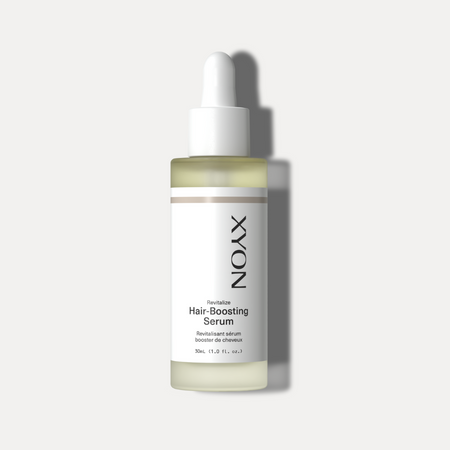
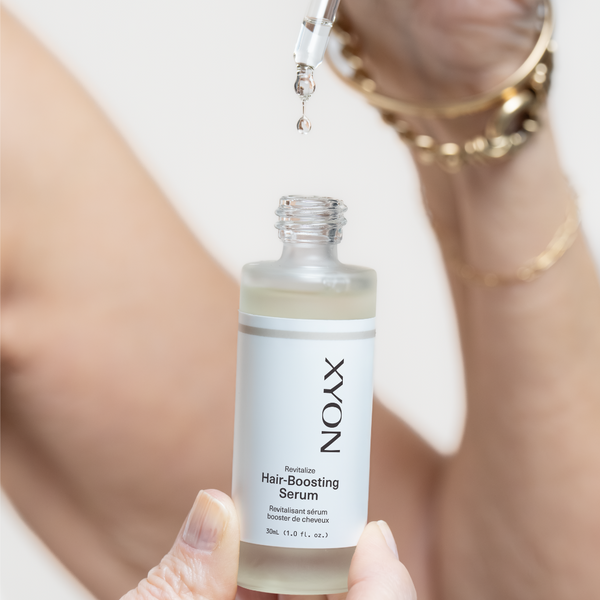
Help Protect Your Hair With Our Revitalize Hair-boosting Serum
Protect Your Hair And Promote Hair Growth With Our Revitalize Hair-boosting Serum
UV effects on hair
Sunburn is considered a major risk factor for the development of certain skin cancers, such as melanoma and although hair provides some coverage from the sun, the scalp can still get burnt (Gandini et al, 2005). Sunburn on your scalp can increase your risk of skin cancer, as well as damage hair follicles and the structure of your hair strands.
The sun can damage your hair cuticle
If you’ve ever noticed your hair feeling drier and more brittle during the summer, it could be a direct result of UV rays from the sun. The cuticle of the hair is formed of overlapping layers of protein which protect your hair from damage and help it to absorb and retain moisture. Interestingly, when observed under a microscope, hair strands exposed to UV radiation over 24 hours experienced cracks and irregularities in the formation of the cuticle protein layers (Cao et al, 2017). This can cause your hair to be highly porous, meaning that moisture may become harder to retain and hairs can become dry and more prone to breaking.
UV radiation can also damage the hair shaft by breaking down the proteins in the strands, particularly keratin, which are vital to the structural integrity of hair (Sebetic et al, 2008). This can result in frizzy hair and split ends. Dr. Han also noted the oxidative stress that UV rays can cause in the scalp, adding:
“UV exposure can lead to oxidative stress on the hair and scalp. This occurs when damaging molecules, known as free radicals, are produced. Usually, free radicals are counteracted by antioxidants, but oxidative stress happens when there’s an imbalance. The free radicals can impair cell function, including hair follicles and this can result in poor hair growth and damage to the skin on the scalp.”
The sun can lighten your hair
You might also notice that your hair gets lighter in the sun. Although it can mean spending less money on salon appointments to touch up your roots, it may be a sign of your hair being damaged by the sun. Melanin is responsible for the color of your hair and skin and it helps to protect against the sun by absorbing and filtering the UV rays (Noguiera & Joekes, 2004). When your hair becomes lighter in the sun, it’s a sign of the melanin becoming degraded, leaving the keratin and other proteins more susceptible to damage. Unlike your skin, your hair cannot produce more melanin and so the damage to those strands of hair will be permanent (until you grow new strands).
So, we know that the sun can structurally damage our hair strands, but can it cause hair loss?
The answer isn’t straightforward but based off the limited data available on the topic, UV radiation could be partially implicated in some hair loss. For example, increased cases of telogen effluvium (temporary hair shedding triggered by stress or a stressful event) have been noted between July and October. It’s believed that UV rays could trigger the onset of telogen effluvium due to the damage inflicted on the hair cuticle and this could explain the surge in cases during these months (Pierard-Franchimont & Peerard, 1999). Sunlight could also exacerbate androgenetic alopecia (also known as pattern baldness) and this could be the result of oxidative stress and inflammation, as Dr. Han previously highlighted.
We also asked Dr. Han to weigh in on the link between sunburn and hair loss:
“It’s unlikely that sunburn will directly cause hair loss. Fortunately, hair follicles are located deep in a layer of skin, known as the dermis. However, ongoing sun exposure to the scalp can result in damage to the skin and in the long-term, this can cause pre-cancerous and even cancerous changes to the scalp. You should always make sure you properly protect your scalp when you’re in the sun.”
How can I protect my hair from UV rays?
Protecting your hair from the sun starts at your scalp. The concern with this is usually the feel of sunscreen in your hair and scalp, as they can often leave your roots feeling and looking greasy. So how do you get around this problem?
Fortunately, there are many products available on the market that are designed to protect your scalp from the sun without creating a greasy feel. For instance, there are lightweight mist products that can be sprayed directly onto the scalp and provide sun protection, typically for up to 2 hours. Alternative options include sunscreen sticks which are rubbed directly onto the scalp, as well as powders which can be brushed on and act as a sort-of dry shampoo at the same time. When you’re at the store and weighing your options for which sunscreen to buy, SPF or UPF are the two key phrases to look out for. Here’s what they mean:
- SPF (sun protection factor) - A number designed to tell you how long the UV rays would take to cause sunburn, compared to if you weren’t wearing any. More simply, SPF 50 indicates that it should take the sun 50 times longer to give you a sunburn when wearing the given product, compared to not wearing any.
- UPF (Ultraviolet protection factor) - This number is used for clothing items, rather than beauty products and it tells you how well your clothes will protect you against the UV rays from the sun. For instance, UPF 50 indicates that 1/50th of the UV rays will reach your skin through the clothes.
Another word to look for when shopping for sunscreen is ‘broad spectrum’ and this tells you whether it provides protection against both types of UV radiation. The sun gives off two types of UV radiation, known as UVA and UVB and they impact the skin in different ways. UVA radiation is responsible for the premature skin aging effects of the sun – it’s painless in the short-term but has a lasting impact on your skin in the long-run. Whereas UVB radiation is responsible for sunburn and skin cancer and this is what SPF measures against. Broad spectrum sunscreen simply means that it protects against both types of UV radiation.
Whether or not a sunscreen is broad-spectrum will be dependent on its UV filtering ingredients, as varying ingredients provide protection against different types of UV rays. For example, aminobenzoic acid protects against UVB, while avobenzone protects against UVA1. The ingredients can also determine whether a sunscreen is a physical/mineral sunscreen or a chemical sunscreen:
- Physical/mineral sunscreen – works by deflecting UV rays off the skin. Active ingredients include zinc oxide & titanium dioxide.
- Chemical sunscreen – works by absorbing the UV rays and converting them into heat on the skin. Active ingredients include: oxybenzone, avobenzone, octisalate, octocrylene, homosalate and octinoxate.
In addition to being diligent about applying sun protection, wearing a hat is another effective way of protecting your scalp from the sun and is likely to provide more coverage than sunscreen.
Do I need to use sunscreen on my hair?
When it comes to your hair, there are various serums and sprays that can help to protect your strands from the damaging effects of the UV rays and these may also be necessary to maintain healthy locks throughout the summer. But it’s important to note that hair and scalp sunscreen are often different and that your scalp requires a higher level of protection. Hair sunscreens contain active ingredients, such as avobenzone and zinc oxide which are UV filters that absorb or reflect UV radiation. These products aim to protect your hair by preventing UV rays from damaging the structural proteins in your strands.
Dr. Han clarifies that hair sunscreen is not a necessity, but it can help to reduce the damaging effects of UV rays on your hair strands.
“The goal is to avoid drying out the hair, since this can increase the chances of hair breakage and work against any progress you might be making in treating your thinning hair.”
It’s also important to keep your hair hydrated, particularly during periods when your hair might be exposed to high UV rays and chemicals from the pool (and even salt water, if you swim regularly in the ocean). Conditioning your hair regularly and using hair oils can be a great way to keep your hair hydrated.
Not sure where to start? Our women’s Fortify Performance Hair Conditioner contains nourishing ingredients, including panthenol which adds moisture, whilst smoothing strands and restoring damaged hair oil is also a great option to add to your summer hair care routine. Our Nourish Perfecting Hair Oil is designed to add instant moisture and shine to hair with ingredients like argan and almond oil.
Takeaway: UV hair and scalp protection
Scalp protection from the sun is absolutely a necessity and using products to protect your hair at the same time could save your crowning glory from unnecessary dryness and breakage this summer. Remember, sunburn on your scalp can do more damage meets the eye – it can potentially trigger or exacerbate some types of hair loss and increase your risk for developing certain skin cancers. So next time you're in the sun, remember to apply sunscreen to your scalp or even better, wear a hat.
References
Cao, Y., Qu, H., Xiong, C., Liu, C., Zheng, L. (2017). A novel method for non-destructive determination of hair photo-induced damage based on multispectral imaging technology. Scientific Reports, 7. https://doi.org/10.1038/srep45544
Gandini, S., Sera, F., Cattaruzza, M.S., Pasquini, P., Picconi, O., Boyle, P., Melchi, C.F. (2005). Meta-analysis of risk factors for cutaneous melanoma: II. Sun exposure. European Journal of Cancer, 41(1), 45-60. https://doi.org/10.1016/j.ejca.2004.10.016
Noguiera, A.C.S., Joekes, I. (2004). Hair color changes and protein damage caused by ultraviolet radiation. Journal of Photochemistry and Photobiology B: Biology, 74(2-3), 109-117. https://doi.org/10.1016/j.jphotobiol.2004.03.001
Piereard-Franchimont, C., Peerard, G.E. (1999). L’effluvium telogene actinique: une facette de la chronobiologie humaine. International Journal of Cosmetic Science, 21(1), 15-21. https://doi.org/10.1046/j.1467-2494.1999.181620.x
Sebetic, K., Masnec, I.S., Cavka, V., Biljan, D., Krolo, I. (2008). UV damage of the hair. Collegium Antropologicum, 2, 163-165. https://pubmed.ncbi.nlm.nih.gov/19138021/
Trueb, R.M. (2003). Is androgenetic alopecia a photoaggravated dermatosis? Dermatology, 207(4), 343-348. https://doi.org/10.1159/000074111

